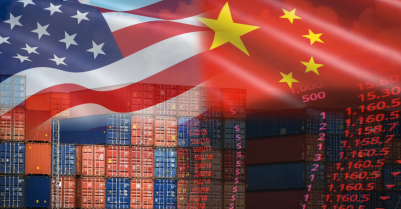Coming Scottish elections: putting independence to the test
The May elections in Scotland are likely to yield a pro-independence majority, which could pave the way for a second independence referendum.

On 6 May, Scots will head to the polls to elect the 129 Members of the Scottish Parliament (MSPs)[1]. If a pro-independence majority were to win, these elections could pave the way for a second referendum on Scottish independence (often referred to as “indyref2”). The Scottish National Party (SNP) has written a promise to hold an independence referendum “once the Covid-19 crisis is over” into its manifesto[2] , which clearly stipulates that the 6 May elections constitute a request to the Scottish people for permission to hold a second independence referendum. The SNP, in power since 2007, is still poised to come out on top in the elections, though it may not win an absolute majority (65 seats).
Polls have pointed to a decline in the SNP’s popularity since the beginning of the year, accompanied by waning support for independence[2]. This recent slide in support seems to be down to the success of the vaccination campaign launched by Boris Johnson’s government (applauded by 82% of Scots, according to YouGov) and, more recently, mounting tensions within the SNP following the “Salmond Affair”. The SNP garnered only 48% of constituency voting intentions at the end of April, down from 60% at the start of the year. However, the party is still far ahead of its opponents in the polls, with the Conservatives and Labour each garnering 21% of constituency voting intentions based on a weighted average of polling results[3]. Meanwhile, the SNP’s popularity in the regional vote has fallen below 40%, its lowest for a year.
The independence movement had gained significant support in early 2020, maintaining a clear lead over the unionists throughout last year (see chart below). However, the “yes” camp has been losing ground in the polls since the beginning of this year, with results now very close and volatile. Polls in April seemed to put the unionists ahead by as much as 8 percentage points in some cases.
Even if the SNP fails to secure an absolute majority, these elections are likely to yield a majority in favour of independence. To secure an absolute majority, the SNP would have to win six constituencies currently held by the Conservatives or Labour. The big unknown in these elections is Alba, the new pro-independence party formed by former Prime Minister Alex Salmond. If Alba were to win more than 5% of the vote, it could rob the SNP of an absolute majority in Parliament. However, polls suggest that the openly pro-independence Scottish Green Party – allied with the SNP in the current government since 2016 – is set to reassert its power in Edinburgh following the regional vote. The SNP might be able to once again count on its support if it fails to secure an absolute majority on its own.
A long, hard road for the independence movement
The UK Government has categorically ruled out another Scottish independence referendum, asserting that such a vote should be a “once-in-a-generation” event. Under British law, issues pertaining to the future of the Union fall within the exclusive jurisdiction of Westminster, which thus has sole power to hold such a referendum. The Scottish Government wants legislative power to be transferred from Westminster to Holyrood (under a so-called Section 30 order) so the latter can pass legislation on this issue. In its opinion, Brexit, which pulled Scotland out of the EU against the will of 62% of Scottish citizens, constitutes a “significant change of circumstances[4]” since 2014 ; moreover, it feels the UK Government ignored the Scottish Parliament’s proposals during the Brexit negotiation process, including in particular its wish for the UK to remain inside the single market and customs union. If the Scottish Government’s request for a Section 30 order is rejected but the SNP decides to push its referendum legislation through the Scottish Parliament anyway, the matter will most likely end up before the Supreme Court. While the Scottish Government has never ruled out the possibility of a consultative vote without authorisation from Westminster, it would be preferable to secure Westminster’s agreement: an illegal referendum could be blocked by the Supreme Court, boycotted by unionist parties and/or generate a low turnout, further undermining its legitimacy.
The issue of an independent Scotland raises many uncertainties[5]: what would a Scotland/UK divorce settlement look like and how would the public finances be divided up? What currency would the new Scottish state adopt? What about its central bank? And what about EU (and ultimately eurozone) membership? It is no doubt in large part because of these uncertainties that a majority of the population (55%) opted to vote “no” to independence in the 2014 referendum (with 45% voting “yes”). Since then, the new UK/EU relationship and the Covid-19 crisis have been major events which, in our opinion, help tip the balance of the economic argument in unionists’ favour. However, as Brexit has shown, it is entirely possible that Scottish voters in an indyref2 could be driven by politics and emotion rather than economic rationale.
The SNP wants Scotland to apply for EU membership if it secures independence from the UK. However, the EU-UK Trade and Cooperation Agreement concluded at the end of 2020 and in force since 1 January 2021 complicates matters. With the UK Government having pulled the UK out of the European single market and customs union, Scottish EU membership would entail a physical border between Scotland and the rest of the UK. However, according to Scottish Government statistics available until 2018, Scotland does three times more trade with the rest of the UK than it does with the EU. Scottish exports to the EU totalled £16 billion in 2018, compared with £51 billion of exports to the rest of the UK and £18 billion to the rest of the world. If an independent Scotland were to gain membership of the EU, it would have to impose customs checks on trade with England. Indeed, trade with the rest of the UK would fall under the terms of the EU-UK Trade and Cooperation Agreement: although tariff-free, it would be subject to rules of origin and full regulatory checks and controls. According to a study by the Centre for Economic Performance[6], the emergence of barriers to trade with Scotland’s main trading partner would have an estimated cost in terms of per capita income two to three times higher than the cost of Brexit, mainly because of Scotland’s disproportionate exposure to the rest of the UK relative to its exposure to the EU.
Slavena Nazarova, Group Economic Studies
[1] Scottish parliamentary elections consist of two separate votes: a vote to elect MSPs for each of Scotland’s 73 constituencies and a further regional vote returning another 56 MSPs from eight regions (seven per region).
[2] John Curtice « Why has nationalist support fallen », What Scotland Thinks website, 19 March 2021
[3] Martin Stabe « Poll tracker: how will the SNP fare in Scotland’s May elections? », Financial Times, 29 April 2021
[4] « Scotland’s right to choose: putting Scotland’s future in Scotland's hands », Scottish Government, December 2019
[5] « Scotland and the price of freedom », Crédit Agricole S.A., 22 May 2014
[6] Hanwei Huang, Thomas Sampson and Patrick Schneider « Disunited Kingdom? Brexit, trade and Scottish independence », Centre for Economic Performance, Brexit Analysis N° 17, 3 February 2021









